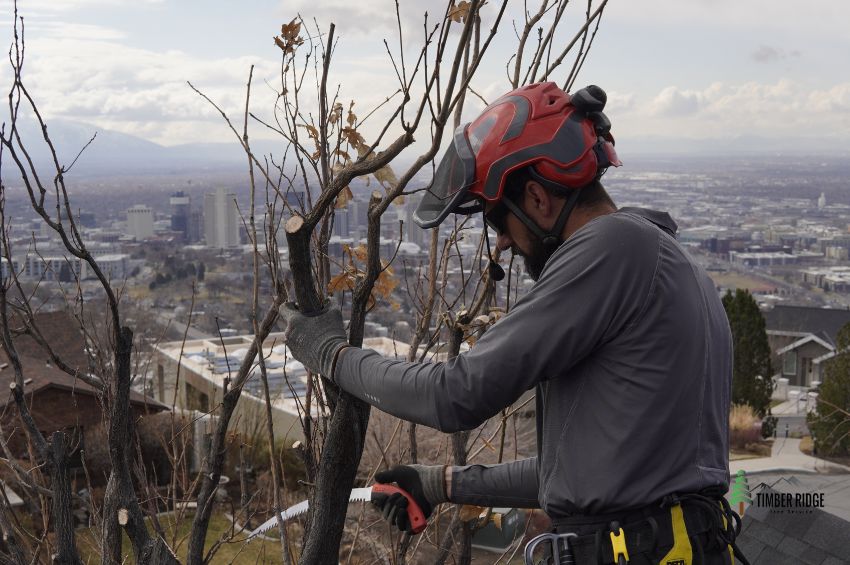
Trimming trees is important for several reasons. It promotes a healthier tree overall, ensures the tree looks great and grows properly, and is a safety precaution. Trees that aren’t properly cared for can become a hazard if branches break or if the tree topples over. If you have a tree that you think may need trimming attention, here are some signs to get it scheduled:
Unwanted growth – Monitor the growth of your tree to see if it’s getting too large or if branches are shooting out where you don’t want them to go. Staying on top of trimming can minimize the need for major pruning down the road. Trimming can be done yourself, but there are many factors to pay attention to to ensure you are trimming it in a way that promotes healthy growth and the right aesthetic. A poorly trimmed tree often grows unruly and not in the shape we want it to.
Diseased branches – Frequently check your tree for diseased sections and address them quickly so the tree doesn’t get weaker or die. Diseases can quickly kill a tree and often transfer to other trees. Symptoms of disease include leaf discoloration, premature leaf loss, decaying branches, and fungal growth (such as lesions on leaves, white or powdery growth, and mildew). Fungi blocks oxygen and nutrients, and you need to cut off these portions and possibly treat the areas with fungicide to prevent it from spreading throughout the entire tree.
Signs of damage – Trees often get damaged from heavy rains storms, strong winds, various impacts, and animals or pests. If a stressor occurs, inspect your tree quickly afterward for signs of damage. These damages can create weak sections of the tree, which is a safety hazard, but they also can develop malformed branches with poor structural integrity. If left alone, they can (at best) start growing strangely and look odd and (at worst) break and fall or kill the entire tree.
Fruit tree growth – Fruit trees require special attention if you want successful production. Start trimming a fruit tree early and guide its growth so you can access the harvest easily. If you’re unsure of the best way to guide a fruit tree’s growth, seek some advice from a professional and stay on top of annual grooming.
With any tree, keep a close eye on its development and address any issues you notice, whether it’s simply aesthetic, something structural, or a health concern. After any weather event, always thoroughly check your entire property for damage, including your trees. If damages occurred to the tree, initial trimming (or pruning if needed) may look odd at first, but with a professional doing the job, you can be confident it will remedy itself and eventually grow normally again. If you have a sick or injured tree and you’re not ready to cut it down, it’s a good idea to bring out a professional one or two times each year to monitor it and address concerns consistently. For expert trimming and all other tree care, contact Timber Ridge Tree Service.